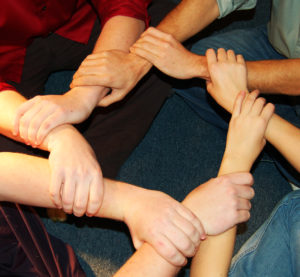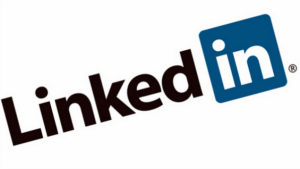Strategic Networking – or – Strategic Relationships
 Often when I talk about strategic networking, people will immediately think of networking events. Their palms will get sweaty as they would rather get a root canal surgery than walk into a room full of strangers.
Often when I talk about strategic networking, people will immediately think of networking events. Their palms will get sweaty as they would rather get a root canal surgery than walk into a room full of strangers.
I now say strategic relationships because there is no relationship building at a networking event!
Relationships are created after the event when you sit down and meet one on one. You get to know one another and find common ground.
What strategic relationships should you have? This is the “who” of strategic networking.
CONNECTORS
 You should have at least 5% of your network … err … relationships, be connectors. Connectors are people who know a lot of people and enjoy making connections between them.
You should have at least 5% of your network … err … relationships, be connectors. Connectors are people who know a lot of people and enjoy making connections between them.
I am a connector. I know a lot of people and thoroughly enjoy playing matchmaker. I will warn you that you should be careful in overusing any one connector. That is why you should have many connectors in your network.
There are special kinds of connectors called recruiters. You should carefully cultivate strategic relationships with recruiters. They are very busy people but they are “people people.” Whenever you engage with them do it with a purpose and state it clearly.
MENTORS
As a Baby Boomer and having started my career in the 1970’s no one encouraged me to find mentors.
When I started my career with IBM in 1978, I knew to seek out those in the area that really knew what they were talking about AND were not jerks! There were some really big egos, who would not help anyone; but there were those who you could learn from. Seek those people out and cultivate formal mentoring relationships.
I now have multiple mentors depending on the subject area.
INDUSTRY OR COMPANY EXPERT
Who in your industry or company do you need to know? Be very selective and make sure they know who you are and what value you bring to the table. You do not need to form a bond with these people but you do need to be on their radar screen.
 I have a client who works for a company that is downsizing. My client is working to maintain “their seat” until they can move on. When the last round of layoffs came my client went to a person of importance within the company and asked for advice.
I have a client who works for a company that is downsizing. My client is working to maintain “their seat” until they can move on. When the last round of layoffs came my client went to a person of importance within the company and asked for advice.
The person of importance could assure my client of nothing but we found out later that the person of importance stepped in to make sure my client had “their seat.” That relationship was built several years earlier!
PEERS
This may sound odd but seek out peers and see how you can help them.
It is important to help others and expect nothing in return. Be that guy or gal that people know that they can turn to when they need help.
Go look at your network! What role does everyone play in your success?
What strategic relationships are missing? What do you need more of?
Strategic Networking – Building Your Tribe
Do you have a tribe? What I mean by a tribe is the people in your network you can go to for a favor and actually expect it to be granted.
How many relationships can you maintain? You may have 10K followers on Twitter or 5K connections on LinkedIn, but how many do you really know? The number of relationships you can maintain is also known as the Dunbar Number. Evolutionary psychologist, Robin Dunbar, began a study of the Christmas-card-sending habits of the English and found that they sent on average 153.5 cards each year. The number of 150 has come up over and over in society. The Amish break up communities when they reach 150. Chimpanzee families reach a maximum of 150.
This is the “how” of strategic networking.
DO YOU HAVE 150 PEOPLE IN YOUR NETWORK THAT YOU CAN GO TO FOR A FAVOR?
In the previous section I wrote about the kinds of people you want in your network:
- Connectors
- Mentors
- Company or Industry Experts
- Peers
Take a moment to locate the LinkedIn profile of everyone you know who could be part of your tribe. You used to be able to tag each profile in LinkedIn with the category that they fall under but that function was recently removed. You may want to build an Excel spreadsheet and categorize each contact.
This may take you a week or more to think of every person and then categorize them.
Do you have 150 in your tribe?
If the answer is no, you have some work to do.
Is there an area where you are weak or have too few?
TIME TO STRATEGICALLY NETWORK TO BUILD YOUR TRIBE
Leverage your network to help you develop those strategic relationships!
What is missing from your network? Too few connectors? Too few company or industry experts? Do you have one or more mentors? Do you need a mentor in a particular skill area?
Develop a list of people who you would like to meet. Who in your network knows them well enough to make an introduction? I always want an introduction to a new connection. Think of this in sales terminology as a warm lead.
Once you have an introduction, schedule either a face-to-face meeting over a cup of coffee or, if they are not local, on the phone.
What will you ask for?
You will ask for A-I-R – Advice, Insights and Recommendations.
 The magic word is advice! When you ask for advice, you will rarely be turned down. It is a compliment. Ask for their insights and then ask for their recommendations. Who else should I meet? Can you make an introduction?
The magic word is advice! When you ask for advice, you will rarely be turned down. It is a compliment. Ask for their insights and then ask for their recommendations. Who else should I meet? Can you make an introduction?
If you will make one outreach a week, you will find that your tribe will grow naturally and strategically.
Do you know who is in your tribe?
Do you need to grow your tribe?
Building Your Tribe for Career Success
It is great to say you have 500+ LinkedIn connections or thousands of Twitter followers but are they in your tribe?
In my book, Repurpose Your Career – A Practical Guide for the 2nd Half of Life, I explain that a tribe goes beyond “people you know.” These are people who understand what you’re aiming for and they’re in your corner. If they meet someone who needs what you’re offering, they’ll make an introduction. They actually want to know how it’s going in your life, your career, and your job hunt. They’re not just being polite.
Your tribe will also turn to you when they need help, advice, or a referral. A tribe is like the old barn-raising communities where you show up with your tools to help a neighbor build his barn, knowing he’ll show up to help build yours.
This is the “when” of strategic networking.
WHAT CAN YOUR TRIBE DO?
About ten years ago, after a near fatal bicycle accident, I decided to volunteer for a layoff from my high-tech employer and I pursued my Texas high school math teaching certificate. I was hired at an inner-city high school to teach Algebra I and II, where the turnover was incredibly high. It was a tough place to start a teaching career and I struggled. I struggled with the job of teaching. I struggled with how to help kids, many of whom came from such difficult backgrounds and definitely did not arrive ready to learn. I struggled with being a novice after years of being an expert.
Every three weeks I sent out an e-mail to a list of about 100 people. I wrote about my kids, my students. I shared about the difficulties I was having, the funny things the kids said, the triumphs and the frustrations. And to my surprise, the group of people reading this “blog” really responded. They looked forward to the emails. They shared them with other people. They gave me encouraging feedback. In short, they became my fan club and my tribe.
I received lots of advice and help but more importantly, I received love and support. I would not have made it through my first year of teaching without my tribe!
BUILDING YOUR TRIBE
You probably already have a tribe. You just need to define who they are.
Dig through your e-mail directory, LinkedIn contacts, and Facebook friends, and identify people who you’d feel comfortable asking for help. For many of us, this is a very short list. But we’re not necessarily talking “help me move” kind of help. It might just be getting together for coffee to discuss strategies for infiltrating a company you’re interested in working for.
- After you finish, analyze this list for skill set, generations, occupations, and other factors. What is missing? (When I went through this exercise a couple of years ago, I realized how few local sales people I knew and could depend on.)
- The next step is to actively seek out those individuals who can fill the holes in your tribe.
- The last step is to actively cultivate your tribe but that is for another post!
The thing about a tribe is, you have to cultivate it, like a garden. You need to weed it from time to time of people you have no real connection with. You have to water it when there’s no rain. You may need to apply fertilizer. Most importantly, you should not neglect it. You need to cultivate a habit of giving it Tender Loving Care (TLC). It needs to be part of the way you think and live or it will wither.
Do you have friends when the only time you hear from them is when they want something? One of the easiest ways to provide TLC for your tribe is to make it a habit of cultivating the relationships. Do you have friends you have not seen in months?
 WHY NOT REACH OUT WITH AN E-MAIL AND CHECK IN?
WHY NOT REACH OUT WITH AN E-MAIL AND CHECK IN?
At least once a week, I glance through LinkedIn or Outlook contacts and find someone I have not heard from in a while. I send them an email as simple as:
Bob,
I have not heard from you in awhile. How are you doing? How is your family? Things are going well with my business. Son got getting married and they make a great couple. Wife’s business is still slow but getting better.
Let me know how you’re doing and do you want to meet for a cup of coffee sometime soon?
Marc
I almost always get a response like the following:
Marc,
Thanks for checking in with me. Life is good…Too busy to meet for coffee but check back in.
Bob
I now know how he is doing and he knows that I care about him. Cultivating is all about building relationships.
WHAT ABOUT MEETING FACE-TO-FACE?
There is no substitute for face-to-face meetings to establish and maintain relationships. I like social media, but that good old face-to-face meeting where you get to shake hands and read body language is critical to long-term relationships. When do you have the time to do this?
I like to have coffee meetings first thing in the morning at 7 or 7:30 AM. When our son was small I learned that it was difficult for anyone to schedule my time for me at that hour. My wife, boss, teammates, son…could schedule things for me to do at any other time but first thing in the morning was sacred.
Sometimes it is not to meet for coffee. Last week, I met a new contact at 7 AM for a morning walk.
What time works for you? Lunch, after work for a beer or other libation, or maybe Saturdays. Pick a time, once a week, once every two weeks or once a month to meet face-to-face with someone in your network. Make it a pattern.
 JUST DO IT! MAKE IT A HABIT!
JUST DO IT! MAKE IT A HABIT!
Are you cultivating your tribe? Are you doing something new and original that you would like to share?
Are you going to wait until you need something before you reach out?
Asking for AIR – Advice, Insights & Recommendations
Frequently, when people use their contacts to try to change careers, they make one of several mistakes:
- They spend the whole time talking about themselves
- They spend the whole time asking questions the other person doesn’t feel comfortable answering
- They squander the interview and forget to meet their primary objectives
How you present yourself to the people who are helping you furthers your personal brand. If you make one or more of the mistakes above, then you’ve communicated that your personal brand is self-centered, unprofessional or scattered. Whereas if you’re focused, clear and appropriate, that’s what your interviewee is going to walk away saying about you. Let’s say you are looking for a new position. You want to check out this hot new startup. You did your homework and received an introduction to one of the managers who we will call Jeffrey.
Do you ask for an informational interview? No…
WHAT YOU WANT TO DO IS ASK FOR “A-I-R:”
 Advice, Insights, and Recommendations
Advice, Insights, and Recommendations
A – Advice– When you ask for advice it is a compliment. Rarely will anyone ever turn you down when you ask for advice. In an e-mail to Jeffrey, ask for 30 minutes of his time to ask for some advice. It could be about how to pursue a position at the company or to learn more about the company. The magic word is “advice!”
I – Insights– Once you meet Jeffrey ask for his insights into how the company functions, the culture, and management structure. You might ask him how he was hired or does he like his job. You will want to ask very opened ended questions to give Jeffrey space and time to talk. This is NOT ABOUT YOU.
R – Recommendations – This is the part that many people forget. Ask “what should I do next?” “Is there anyone else you would recommend I talk with?” “Can you introduce me to anyone else within the organization?”
You will ask Jeffrey questions and only talk about yourself when asked. It is not about you!
This is all about building the relationship. Asking for advice, insight, and recommendations is a great way to initiate and cultivate a lasting relationship.
You have not asked for help to get a job but you have asked for help in understanding the organization and for further networking opportunities. You are networking to build relationships and not to find a job. The opportunity to interview for a position will come later after you have established relationships.
Jeffrey will likely provide an introduction to at least one person, if not two, if you made it clear you were interested in him and his perspective.
You will ask for advice, insights and recommendations from each of the individuals to which Jeffrey made introductions.
When each meeting is complete who are you gonna call? Jeffrey.
Well maybe not call, but at least send him an e-mail and let him know how it went. You will also tell him if you received any more introductions. People love to know that they’re helping and that the time they spent with you had some value. They also appreciate knowing that you’re grateful and recognize the time and effort they contributed to your career search.
Now, if a position opens up at this hot startup, Jeffrey will think of you. If you made a favorable impression, he might even call you before the position is posted.
I was hired exactly this way at my last two tech startup companies.
Partner with Recruiters to Manage Your Career
Recruiters are an integral part of the hiring process at most companies. There are several things you need to understand about them.
 They are people who like dealing with people. Most recruiters became recruiters because they are social and like helping others. In general, they are very nice people.
They are people who like dealing with people. Most recruiters became recruiters because they are social and like helping others. In general, they are very nice people.- They change jobs frequently. We all know with the ups and downs of the economy, recruiters are the first to be laid off when things get bad and the first to be hired when things turn around.
- They connect with almost everyone in the organizations they work for and carry those connections from company to company. They have large networks.
- Recruiters are often the person in between you and the hiring manager.
- If there’s anyone you want to share your personal brand with, it’s recruiters.
CONNECTING ON LINKEDIN WITH RECRUITERS
When you locate a target company that looks like a good potential employer for your services, you should do the following:
Go to LinkedIn advanced search and look on the title field for “recruiter” in the name. I actually use the following search string: “recruiter OR Talent OR Human Resources OR HR” as some organizations do not use “recruiter” in their titles or may not have someone in HR dedicated to recruiting. Also try “talent acquisition specialist.”
Identify recruiters and send them connection requests that state why you want to connect. A good example is as follows:
Dear (insert recruiters name,)
I am very interested in a marketing position at XYZ company (if there is a current position open mention it.) Are you the recruiter who handles these kinds of positions? If not, could you direct me to the recruiter who does? Could we set up a time to talk about your organization? In the meantime, please accept this invitation to connect.
Your name
When the recruiter receives your invitation three things will happen:
1. They will look at your profile. That is your #1 goal! You will know if they looked at your profile by monitoring the Who’s viewed your profile section of LinkedIn.
2. Almost every time, the recruiters will accept your invitation to connect. You will now rise higher in their searches because you are a first-degree connection. Also, their networks of company employees are now your 2nd degree connections, and you can see full names of employees in the target company!
3. If they like your profile, they will likely reach out to you for a short conversation via e-mail or over the phone. They may forward you on to the recruiter who handles the positions you are looking for.
What if they accept my connection but I never hear from them?
Send them an e-mail or LinkedIn message. You are now a first degree connection on LinkedIn.
CULTIVATING RELATIONSHIPS
 Recruiters need you as much as you need them. They are looking for referrals. When you talk with them always be polite and courteous. Always complete the conversation with how can I help you?
Recruiters need you as much as you need them. They are looking for referrals. When you talk with them always be polite and courteous. Always complete the conversation with how can I help you?
Remember that recruiters move around. Keep track of their career moves using LinkedIn Contacts functions or websites like Nimble. Be helpful to them when you are not looking for next gig.
I cannot stress enough that building long-term relationships with recruiters will pay long-term dividends.
What have you done for a recruiter today?
Make Strategic Networking Part of Your Career Management Strategy
You next career move will likely come through a relationship.
Are you ready to cultivate and manage that relationship strategically?
If you strategically manage your network and cultivate the right relationships, you will stay employed at a company you want to be at for the rest of your career.
Doesn’t that sound good?
You now have a playbook for strategic networking. Are you ready to execute the plays?
Do you want some help in changing your career management strategy?
If so, contact me.
Like What Your Read? Get Career Pivot Insights
Do You Need Help With ...

Check out our Help Center where you have access to 14 different content portals.







Nice Post. Thank you for sharing.
Thanks Jerry!
Marc Miller,
You have put together a winner here. It is a brief, yet brilliant article that has given me great ideas to work from during my transition out of the military. Thank you!
Doug,
Thanks. Let me know if I can be of any help!
Marc